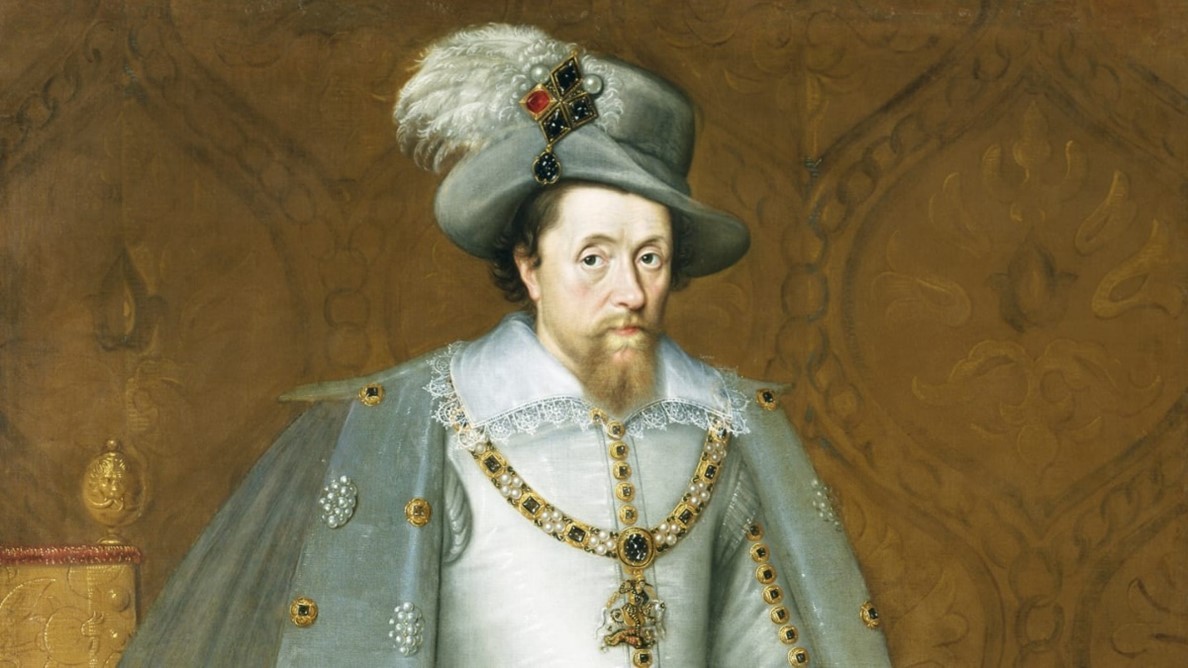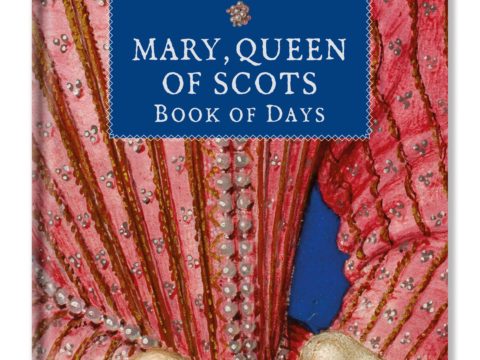James VI and I: The Man Behind the Myth
by Dr Steven Veerapen
Chapter 1: Introduction

Historically, the Stuarts have enjoyed less attention – at least in popular media – than their predecessors on the English throne, the Tudors. Thanks to innumerable films, television dramas, documentaries, plays, and operas, the lives and loves of Henry VIII and Elizabeth I, for example, have become common currency; their images and personalities, too, have been indelibly imprinted on the public imagination. The first Stuart king of England, James VI and I, has fared less well, being only intermittently depicted on screen – and then usually as a bit-player in the life stories of others. This is a shame, given his historical significance: the sixth James to rule Scotland, he became the first to rule England, succeeding the childless Elizabeth I and uniting the crowns of Scotland and England in a personal union.
That is not to say, however, that James is an unknown quantity in the popular consciousness. On the contrary, there exists a welter of misconceptions and myths surrounding him. Some, of course, we can discount wholesale: he did not, for example, knight a particularly delicious cut of beef ‘Sir Loin’, and he certainly did not lead a small army to the west coast of Scotland in pursuit of the legendary cannibal Sawney Bean and his murderous clan. Yet other beliefs about the enigmatic monarch are curiously – even frustratingly – persistent. He was, it is often claimed, dirty and smelly; he was a laughable coward, terrified of his own shadow; he had a tongue too large for his mouth and would slobber over a bevy of male lovers; he had some form of disability and would lope around his chambers, his fingers fiddling with his codpiece. To what extent is any of this true?
The classic image of King James can be largely traced to one source: a pen-portrait ascribed to one Sir Anthony Weldon (though it is by no means clear if Weldon actually wrote it). The text, The Court and Character of King James, contains the following caustic passage:
[James] was of a middle-stature, more corpulent through his clothes than in his body, yet fat enough, his clothes ever being large and easy, the doublets quilted for stiletto proof, his breeches in great pleats and full stuffed. He was naturally of a timorous disposition, which was the reason of his quilted doublets: his eyes large, ever rolling after any stranger [who] came in his presence, insomuch, as many for shame have left the room, as being out of countenance. His beard [was] very thin, his tongue too large for his mouth, [which] made him drink very uncomely, as if eating his drink, which came out of the cup of each side of his mouth. His skin was as soft as taffeta sarsenet, which felt so, because he never washed his hands, only rubbed his finger ends slightly with the wet end of a napkin. His legs [were] very weak, having had (as was thought) some foul play in his youth, or rather before he was born, that he was not able to stand at seven years of age, this weakness made him ever leaning on other men’s shoulders, his walk was ever circular, his fingers in that walk ever fiddling about his codpiece.[i]
This image, memorable as it is, requires attention. For one thing, it gained currency in the seventeenth century not as an accurate depiction of the king but as a weapon in the armoury of anti-Royalist propagandists (this during the conflicts between monarchy and parliament which would convulse the British Isles during that century). Even if one accepts that Weldon – who was indeed a Jacobean courtier – penned the text, it is worth noting that it describes James in his dotage. That it has come to characterise the king more generally is a shame; it would be akin to Sir John Harington’s description of the elderly Elizabeth I rampaging through her chambers, paranoically thrusting a rusty sword into arrases, being used to characterise that queen at the height of her life and reign. Even so, given just how effective this single portrait of James VI and I has become in shaping his image, it is worth dwelling on. Can we deconstruct the slobbering, codpiece-fiddling, unwashed caricature? To do so, it is worth taking each of its charges in turn.
[i] Weldon, The Court and Character of King James, p. 55–56.
